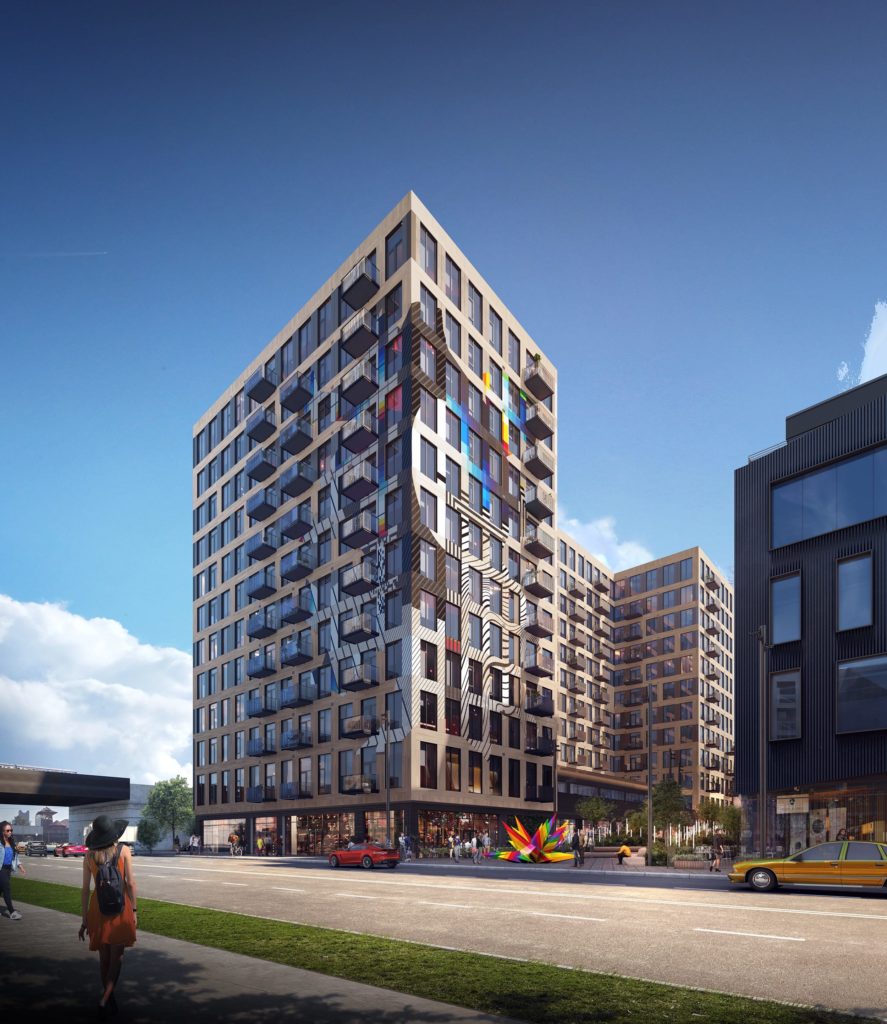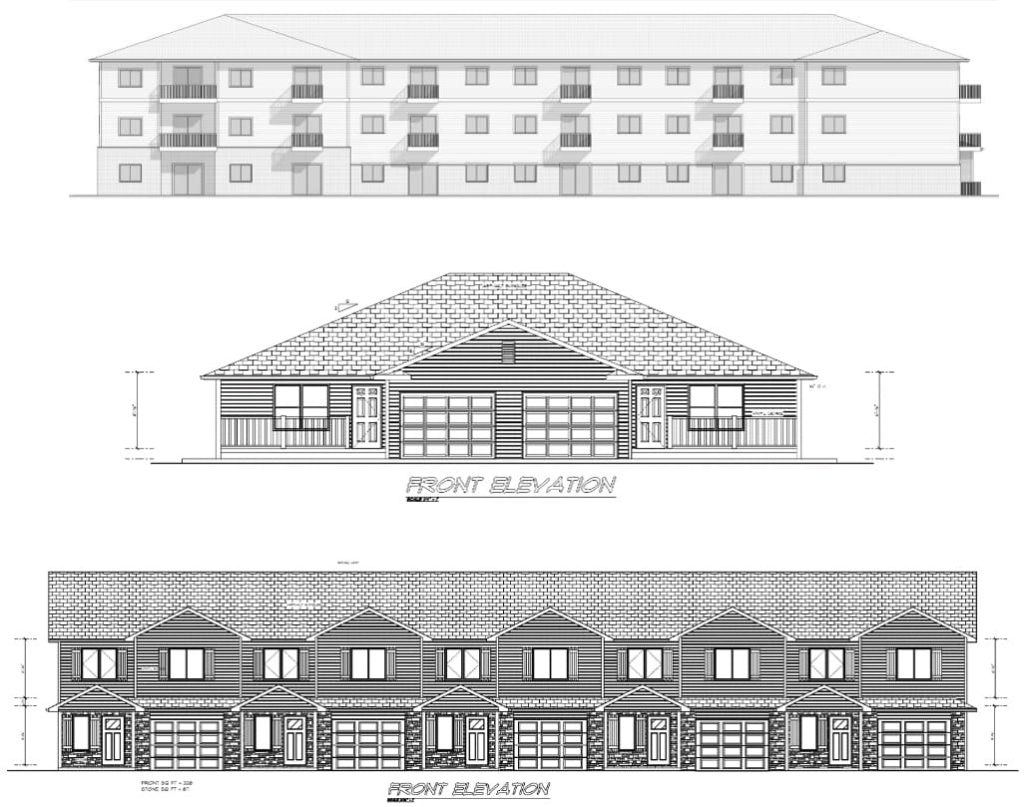Opportunity Zones (OZs) are an economic development tool created by the federal government in the 2017 Tax Cuts and Jobs Act. According to the Internal Revenue Service,
An opportunity zone is an economically distressed community where new investments, under certain conditions, may be eligible for preferential tax treatment. Localities qualify as opportunity zones if they have been nominated for that designation by the state and that nomination has been certified by the Secretary of the U.S. Treasury.

The Treasury Department lists the final tracts of all the Qualified Opportunity Zones (QOZs) here.
Investments made into Opportunity Zones go through a qualified opportunity fund (QOF). QOFs can take the form of a corporation or partnership. Two tax incentives for investments are provided in an Opportunity Zone. First, it allows taxpayers to defer federal taxes owed on any capital gains invested in a QOF. Investors may be eligible to reduce federal taxes owed on the deferred capital gains over time. Second, the law excludes from gross income the post-acquisition gains on investments by QOFs that are held for at least 10 years.
Some localities have attempted to attract investments by building capacity in their QOZs. For example Erie, Pennsylvania, added free WiFi for its eight designated QOZs.
Other communities are currently seeing project development. Duluth, Minnesota, home to five qualified census tracts, has about $125 million of investments in six public-improvement projects, with at least six more in the works.

OZ Housing
Gravity (Phase I), an Opportunity Zone project out of Columbus, Ohio, began construction prior to OZ legislation in early 2017. The project is located in the Franklinton neighborhood of Columbus and “seeks to elevate and build into the surrounding community by supporting local artists, driving innovative events and programming, and promoting wellbeing,” according to Frank Sasso, president of Kaufman Development. Gravity I is a mixed-use project of 234 multifamily units and 80,000 square feet of commercial space.
“Both the long-term nature and lower return thresholds [of Opportunity Zones] have allowed us to conceptualize a second phase of the Gravity Project that will be even more impactful than the first,” Sasso said. Phase II of Gravity, five acres south of Phase I and still in the Franklinton QOZ, is nearly twice as dense as Phase I with an total of nearly 400 multifamily units due to locating in the QOZ.

Other benefits of locating in the QOZ include a variety of price points from affordable to market-rate and enhanced public art and spaces. Phase II contains an additional 170,000 square feet of office space to support job creation in Franklinton, as QOZs can attract business activity and relocation.
Two projects by Hoppe Homes, out of Lincoln, Nebraska, are still in the entitlement phase, yet highlight the process of developing within OZs. Antelope, an urban redevelopment in Lincoln, was acquired by Hoppe prior to the 2017 tax act. At the time, the surrounding area was deemed blighted and substandard, incentivizing redevelopment with tax increment financing (TIF), which is what originally attracted Hoppe.
In trying to develop workforce housing at an 80 to 100 percent area median income (AMI) level, any incentive is beneficial, according to Jake Hoppe, vice president of development and finance at Hoppe Homes. By developing in an QOZ, additional tax incentives may be available to Hoppe.
After realizing the benefits of developing the project in Lincoln, Hoppe Homes bought land in another QOZ outside of Freemont, Nebraska. Hoppe began the new project, Bluestem Commons, within an QOZ, and is attempting to make this project a good financial asset for potential investors and meet the needs of the community at the same time.
Bluestem Commons is planned as a mixed-use community of multifamily workforce rentals and for-sale townhomes and rowhomes among commercial and amenity space. Hoppe Homes intends to hold each project to maximize the potential deferral of taxes, which has led them to plan more rental units than they might have done otherwise.
It can be a challenge to motivate capital providers to lend for development in areas that might have limited appreciation; national-scale investors may overlook investment in areas such as Omaha or Freemont, but the combination of a dedication to workforce housing and additional leverage through increased returns in an OZ has allowed Hoppe Homes to gain funding from national nonprofit equity provider.
Hoppe notes importantly that OZs are not going to make a bad project a good project. While QOZs provide tax incentives for investors, potentially leading to additional sources of capital, a housing project still has to make sense on its own. Another benefit Hoppe described is that the QOZs can become a selling point in a community during the entitlement process and fights back NIMBY attitudes as it ties the company to project success for the long term.
Lamar Smith Homes, developer of Hartford, an OZ project in Statesboro, Georgia, recommends locating competent advisors to ensure the project stays in compliance with federal guidelines. To take advantage of the potential tax benefits available when developing in a QOZ, a developer must consider the maintenance and management for a designated period of time. For Lamar Smith, this meant transitioning from its traditional single-family, build-and-sell model to a 10-year rental management operation. Smith Homes plans to build uniform homes and landscaping that is practical to maintain for the 10 years. They instituted a strict covenant for house care and built a surrounding fence to restrict traffic flow to maximize asset appreciation.

Opportunity Zones can attract investors to areas in a community they may have initially overlooked. When identifying potential projects, builders and developers should factor in all the requirements of the development process, including the potential for long-term project management. Use this map to explore OZs that may be available in your area.
For additional resources on housing, housing affordability, and tips and tools for the development process, please check out NAHB’s Land Use 101 webpage. The resources will be of benefit in tackling development projects in new areas. NAHB is committed to provide the most up-to-date and relevant information on OZs; NAHB’s website contains a dedicated Opportunity Zone webpage, along with other resources.
NAHB is providing this information for general information only. This information does not constitute the provision of legal advice, tax advice, accounting services, investment advice, or professional consulting of any kind, nor should it be construed as such. The information should not be used as a substitute for consultation with professional tax, accounting, legal, or other competent advisers.


